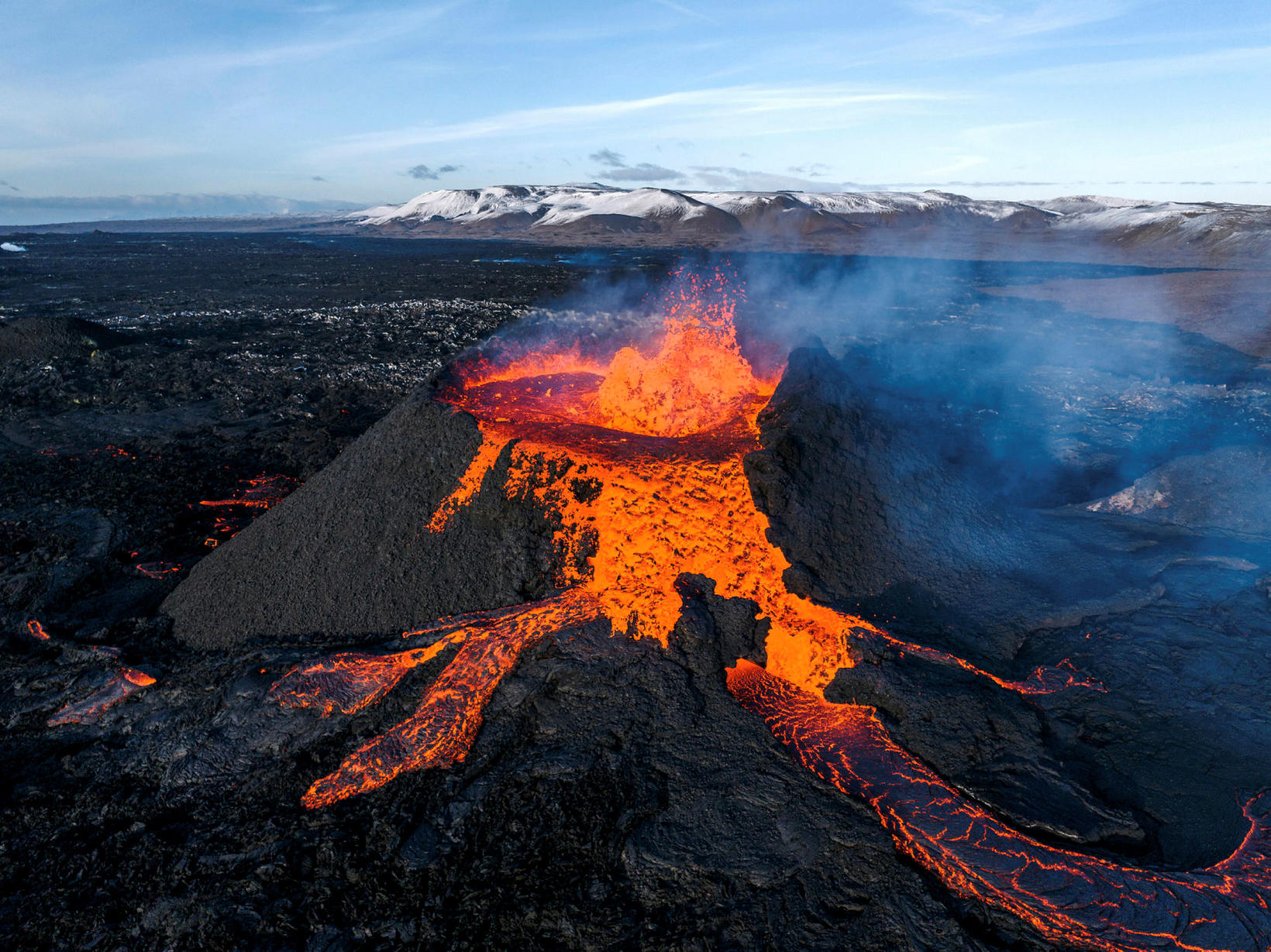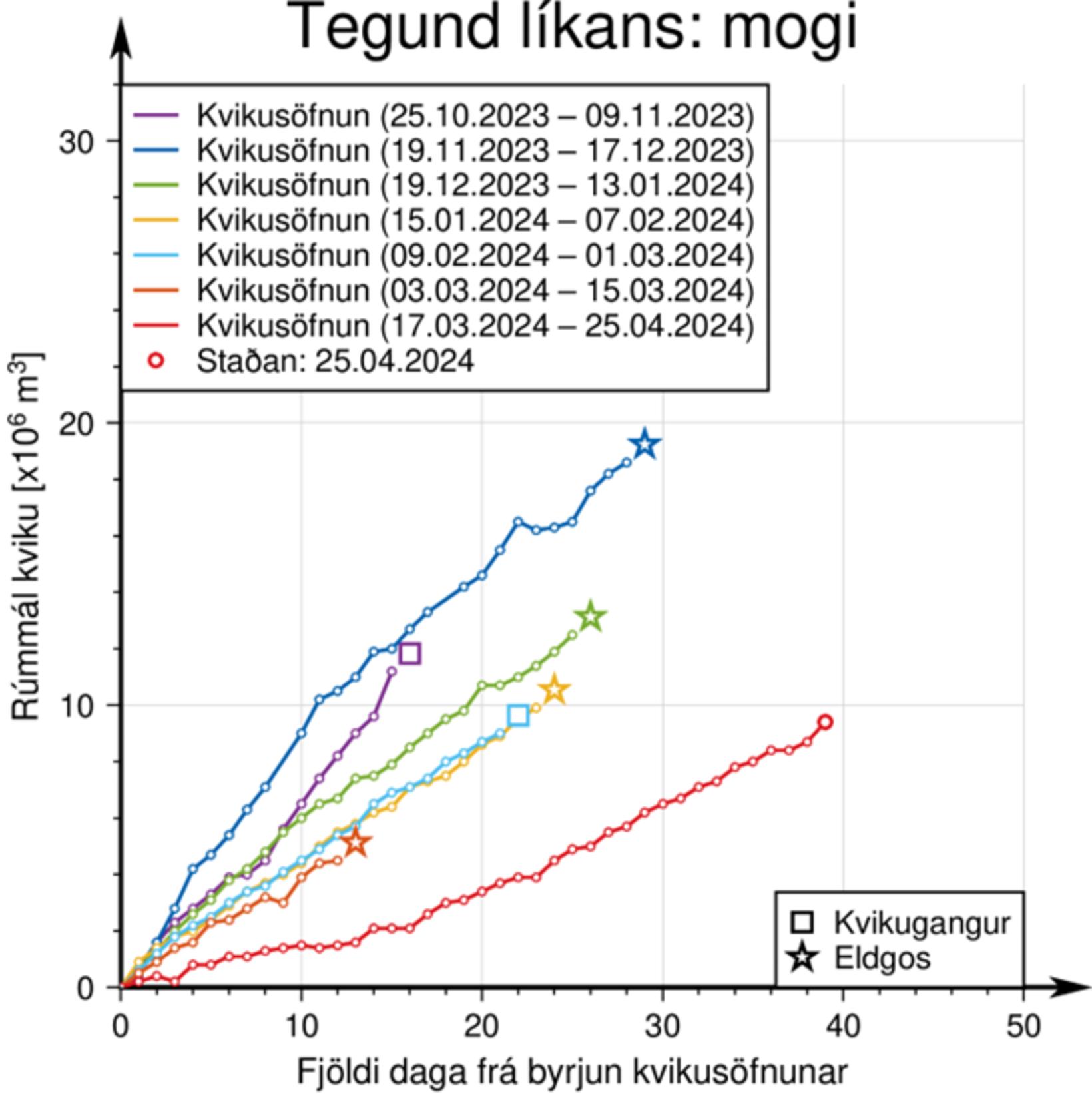Slower inflation at Svartsengi suggests something might happen soon
“If the power increases in the eruption, it can lead to the current eruption openings growing or lengthening up,” Þórðarson says. Photo/Hörður Kristleifsson
The active crater at Sundhnúkagígar crater row could grow even larger if the magma production increases, which is likely, according to a volcanologist. Inflation in Svartsengi seems to be slowing down, which could mean that there is “something is about to happen.”
This is what volcanologist Þorvaldur Þórðarson tells us. He expects to see an increase in volcanic productivity in the next 48 hours, especially if it turns out that inflation is slowing down Svartsengi.
Þorvaldur Þórðarson volcanologist predicts that some changes will occur in the next hours or days. mbl.is/Arnþór
The magma that flows out of the crater in the eruption at Sundhnúkagígar crater row comes from a magma chamber deep under the Svartsengi ridge. Above that chamber is another shallower magma chamber, which then spews the magma to the surface.
“The magma that comes out of the deeper reservoir [i.e. the magma chamber] partly goes up into the eruption and partly it’s pumping into this [shallower] reservoir,” Þórðarson explains.
A slower inflation could mean news
Inflation has been ongoing in Svartsengi, which means that more magma flows into the shallower magma chamber and still flows out of it. This is considered highly unusual.
“But now I notice that the inflation is slowing down,” says Þórðarson.
According to the Icelandic Met Office, there are indications that the inflation has begun to slow down. This will be more apparent today, when experts will have reviewed the data.
“[A slower-moving inflation] is usually a kind of indicator that something is going on. Maybe a sign that the reservoir is getting full,” Þórðarson says.
The chart shows the estimated amount of magma that has been added in the chamber below Svartsengi between the eruptions that have occurred since November 2023. Chart/The Icelandic Met Office
“Plumbing” and and a tank that has reached its tolerance limits
Þórðarson believes that the magma chamber has reached its tolerance level. The question is what happens next, but as so often before, more than one scenario is possible.
“If you think of it like a plumbing line, and then you have a small tank halfway on the pipe-line. And you pump it in when it’s full. Then one of two things can happen,” he explains, and projects two scenarios, both of which assume an increase in the force of the eruption.
The first scenario, and the most likely one, according to Þorvaldur, is that the tank will simply fill up and the flow of magma through the shallower chamber will increase alongside it, without land degrading.
The other scenario is that the "tank" will empty, with the corresponding deflation in Svartsengi, and that the productivity of the eruption would suddenly increase dramatically.
No big drama
This would mean that the volcanic fissure could expand.
“If the power increases in the eruption, it can lead to the current eruption openings growing or lengthening up,” Þórðarson says.
He does not expect a new magma run to form or a new eruption to occur in a new location.
“The volcano’s power increases a little, there’s a little more lava flow, and there’s no big drama going on. This is a certain development in the eruption itself,” the volcanologist concluded.








/frimg/1/49/16/1491626.jpg)




